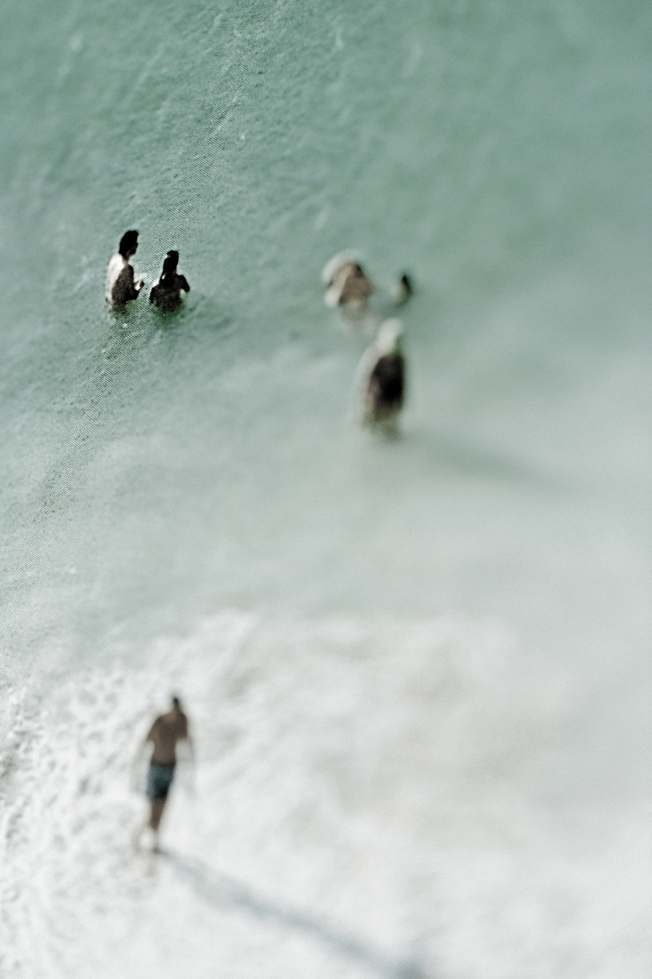
bathers 01
Bathers 2003/04
bathers – a visual rush
My interest in art photography is to reflect on the conditions of the way we perceive reality. I believe that, nowadays, meaningfulness in the faculty of vision (our most immediate form of assimilating and constructing reality – the way we picture the world) is to be found in the pondering of this mode of perception as such. In book projects and exhibitions, I have ex-amined models of perception and of making sense of the world about us.
My current project is based on the element of water. Seventy per cent of the human body is water, and a similar proportion of the earth’s surface is covered in water. Even before we are born, we grow in the sustaining fluid of the uterus. Existing in a liquid sphere is an ar-chaic, pre-conscious form of life that speaks of the roots of our human evolution. In our cul-tural history, the act of swimming or bathing has always had a dual connotation – of sur-vival in a hostile element, and of a means to physical hygiene and relaxation. The cultural history of the representation of swimmers/bathers ranges from cave drawings to ancient Greek and Roman mosaics, medieval book illustrations, the paintings of a Cézanne or a Ma-tisse and pin-up photography. From the twentieth century on, the tourist industry has ex-ploited these powerful visual archetypes to advertise potential holiday destinations.
For my current piece, ‚bathers‘, my source material was print illustrations of bathers, people swimming, splashing about, all the images originating from advertising brochures for holi-days and wellness venues.
I recycle the gaudy source images by re-photographing details from aerial views from a bird’s (or god’s) eye view with the aperture wide open and least possible focus; the horizon is cut out. I then process these pictures with image-processing software, such that pictures almost leached of any depth of colour result.
The turquoise blue of the Caribbean or the Aegean is diluted down to a subliminal wash. The result is a great void broken only by fragments of shore, waves and the odd bathing acces-sory here and there: not enough to mitigate the oppressive effect of the emptiness against the bathers who have mutated to mere abstract dots. The emptiness is fractured for all that, wherever the dot grid of the original printed matter becomes visible in the narrow plane of sharp focus. These images, sapped of colour almost to the threshold of black-and-white, have forfeited all their aggressive billboard effect and literally ‘swim’ to become ab-stract/concrete oscillation figures – a visual blur, a ‘noise’ only intensified by the highly uni-form common visual factor, which I vary only minimally.
Lamda-Prints mounted on aludibond with Diasec-Plexiglas 80 x 120 cm, Edition of 5 + 1 a.e.
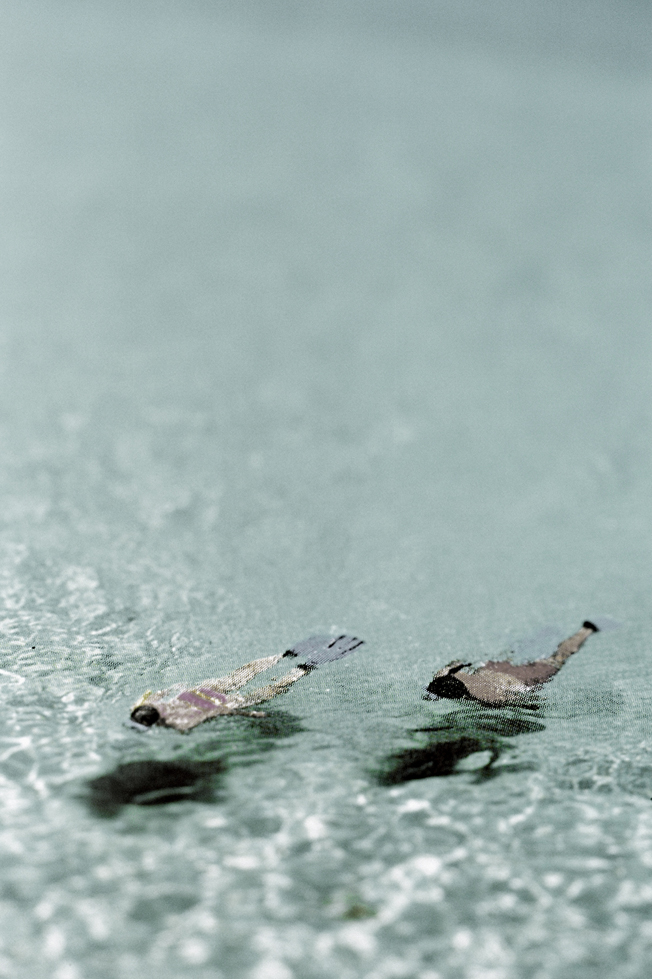
bathers 02
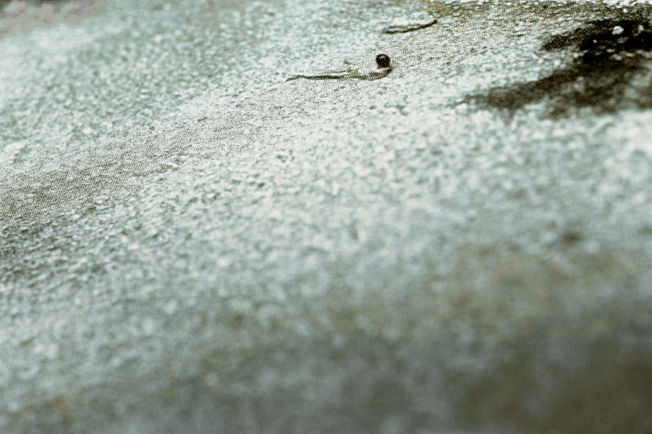
bathers 03
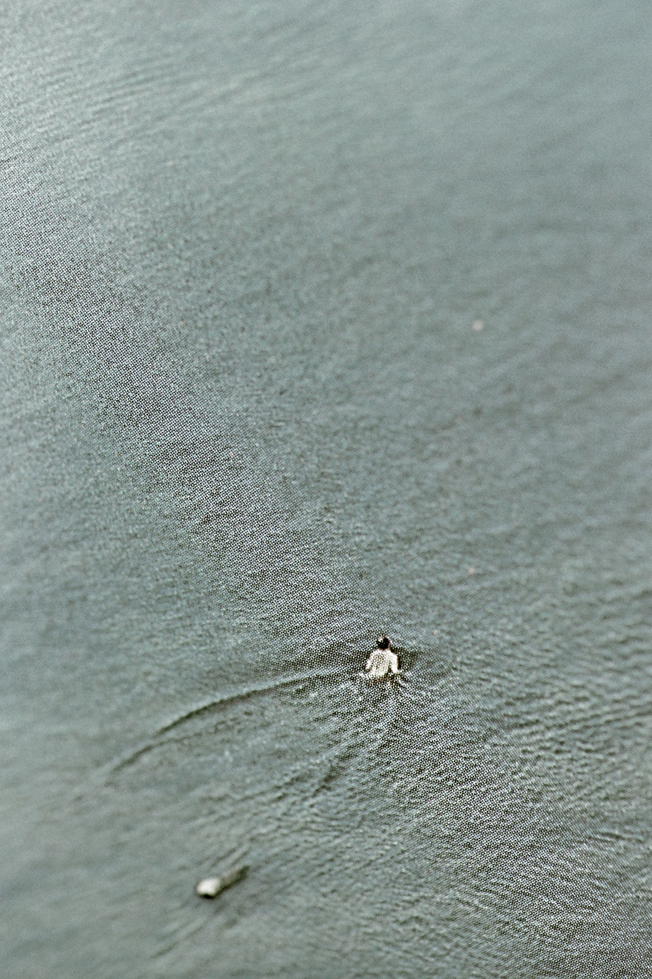
bathers 04
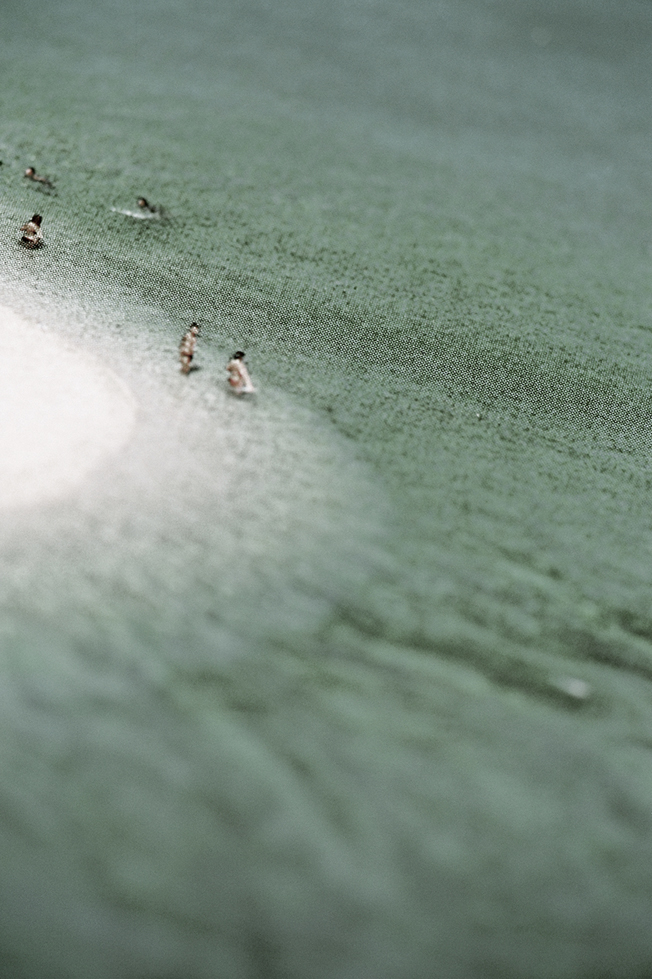
bathers 05
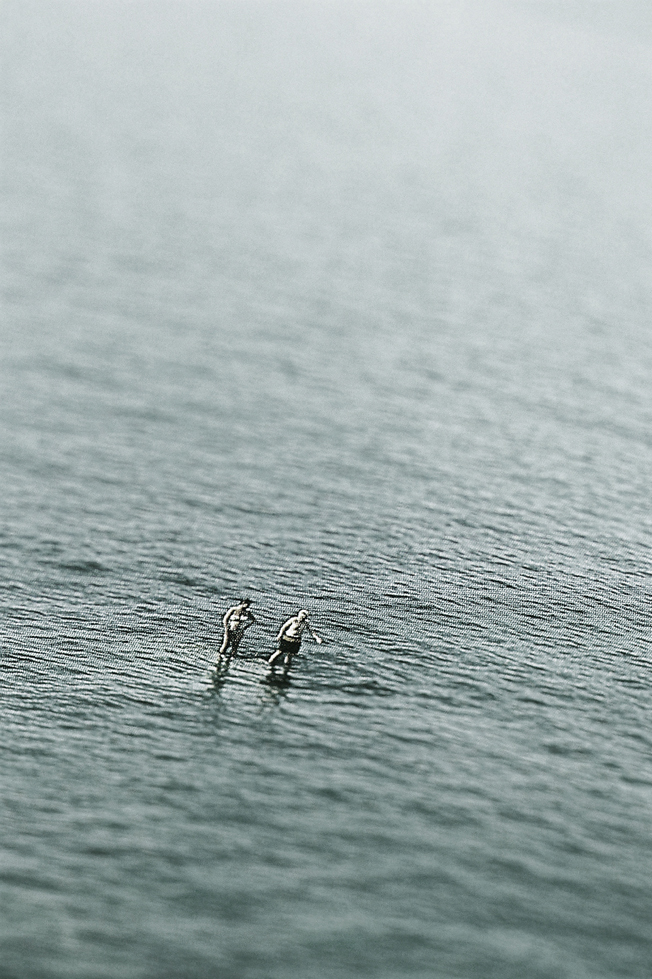
bathers 06
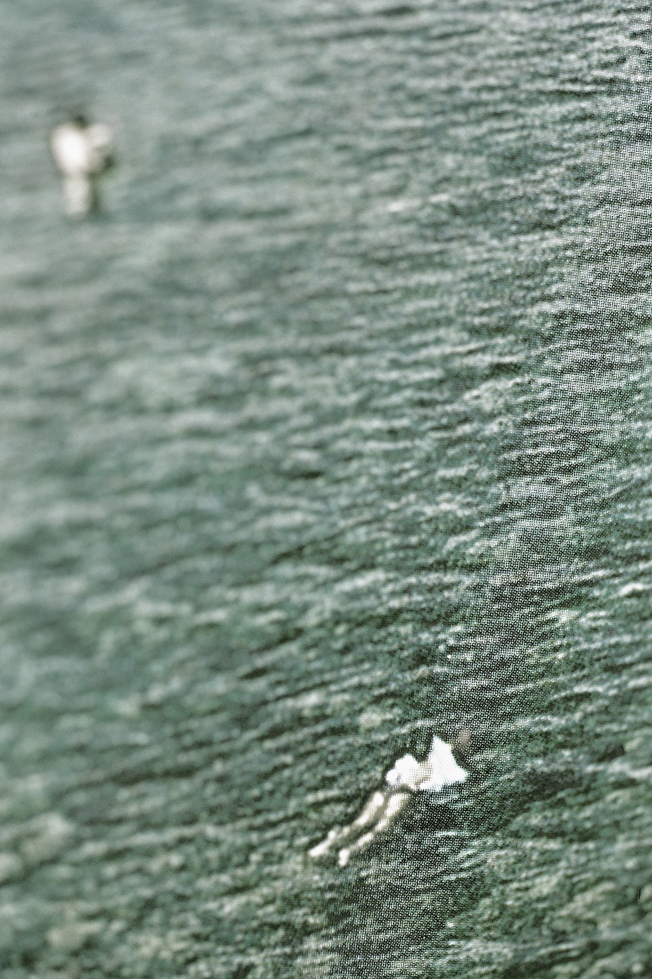
bathers 07
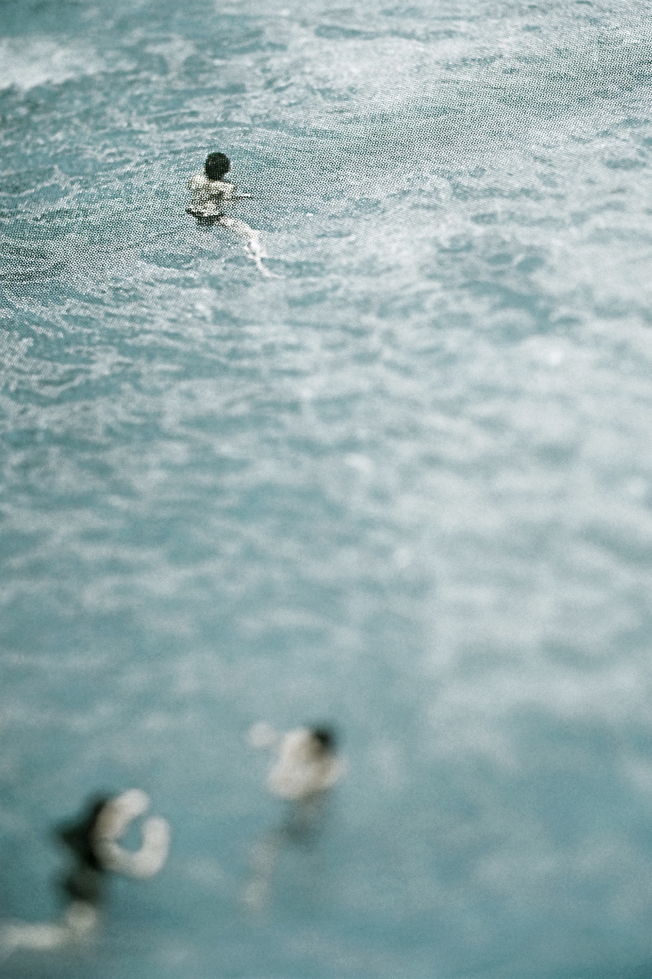
bathers 08
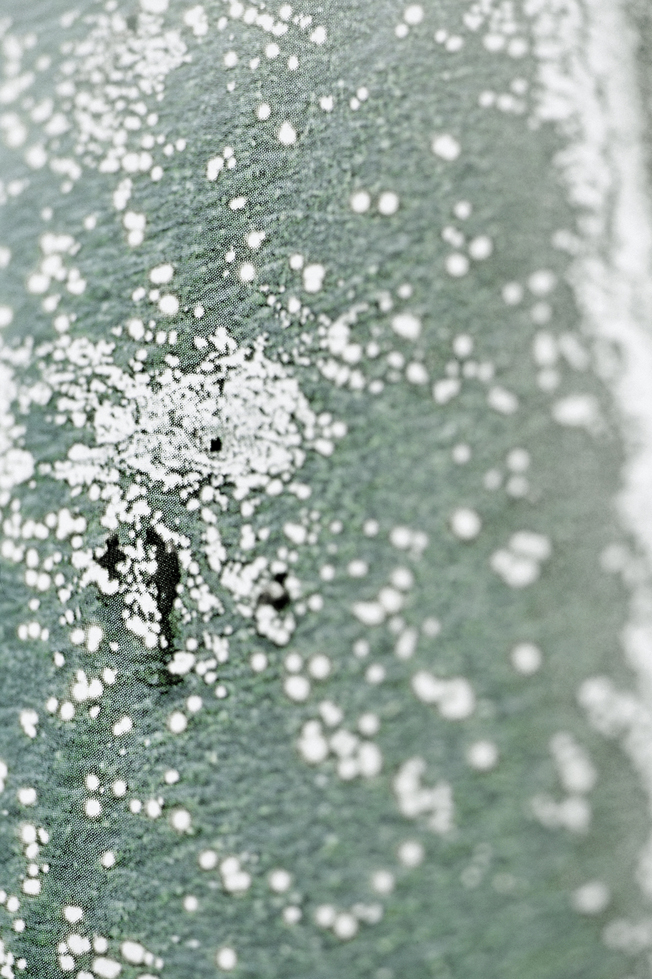
bathers 09
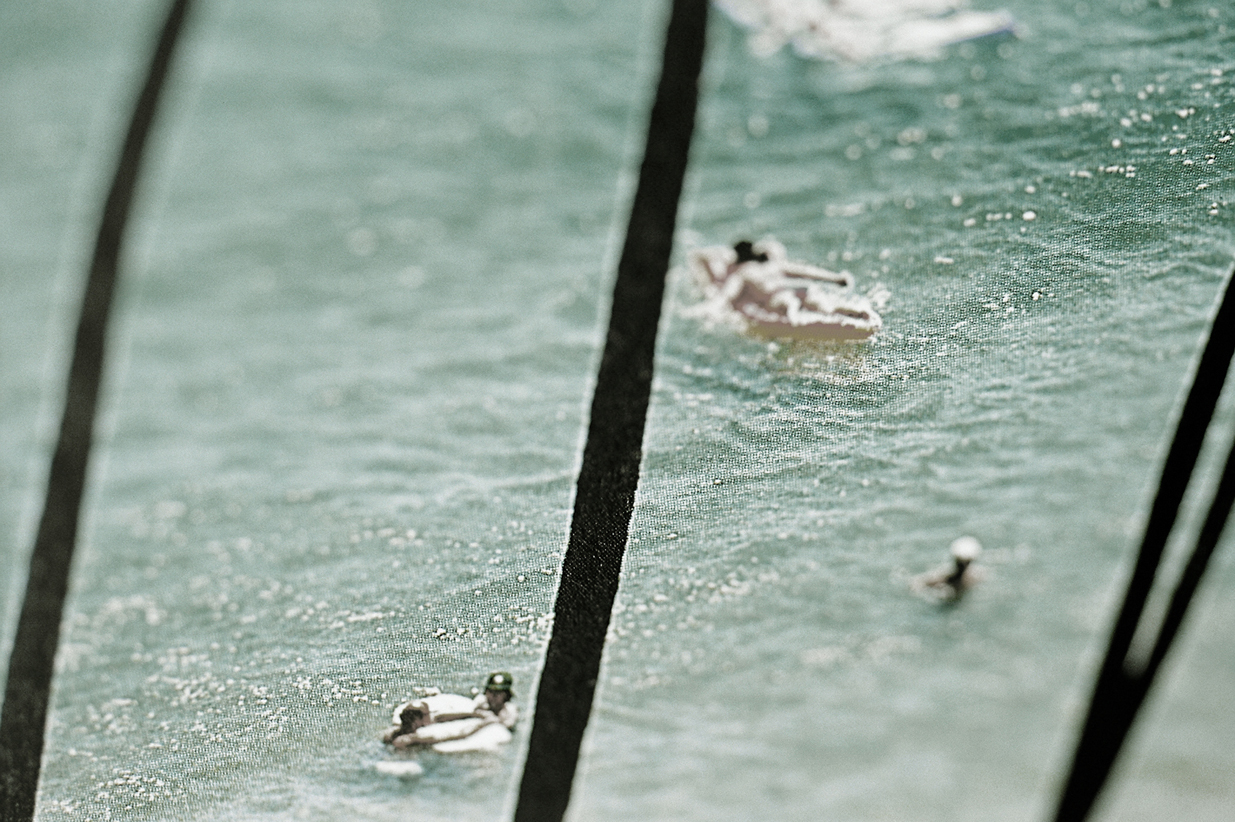
bathers 10
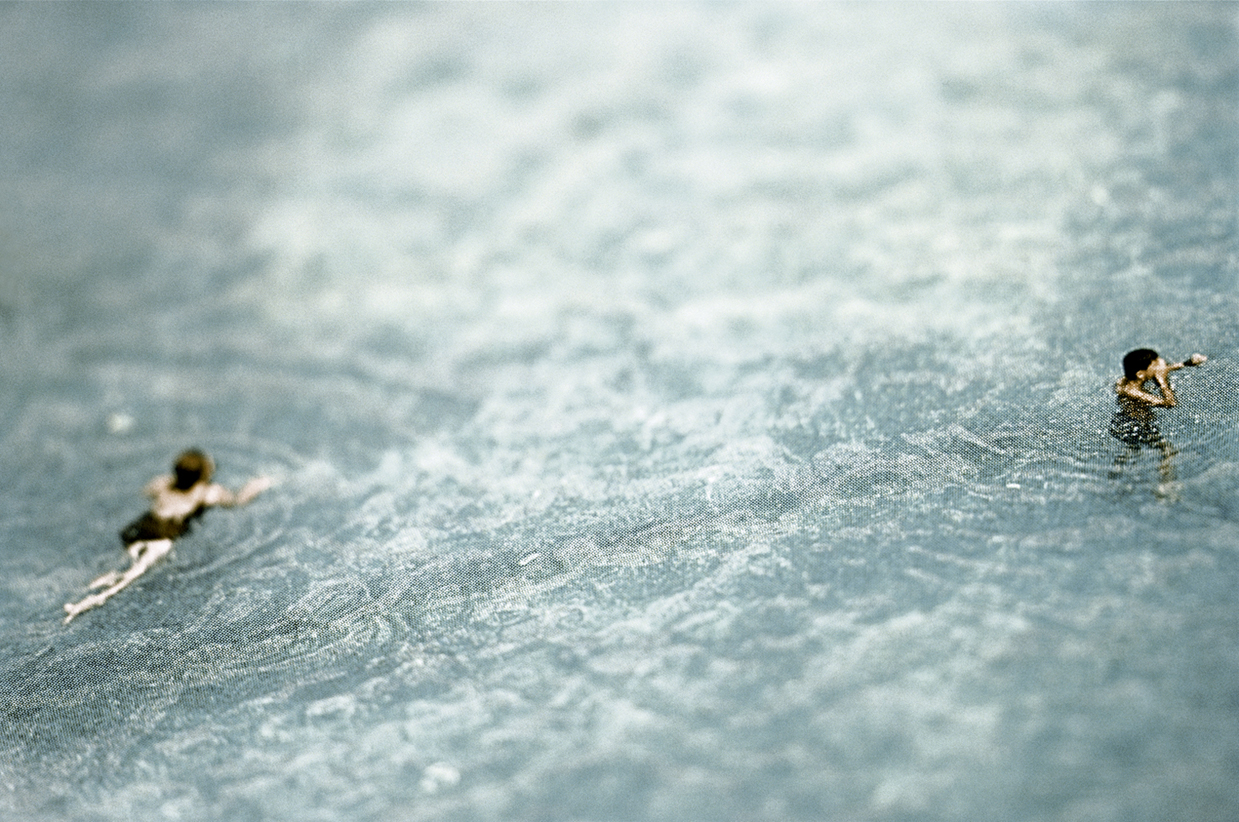
bathers 11
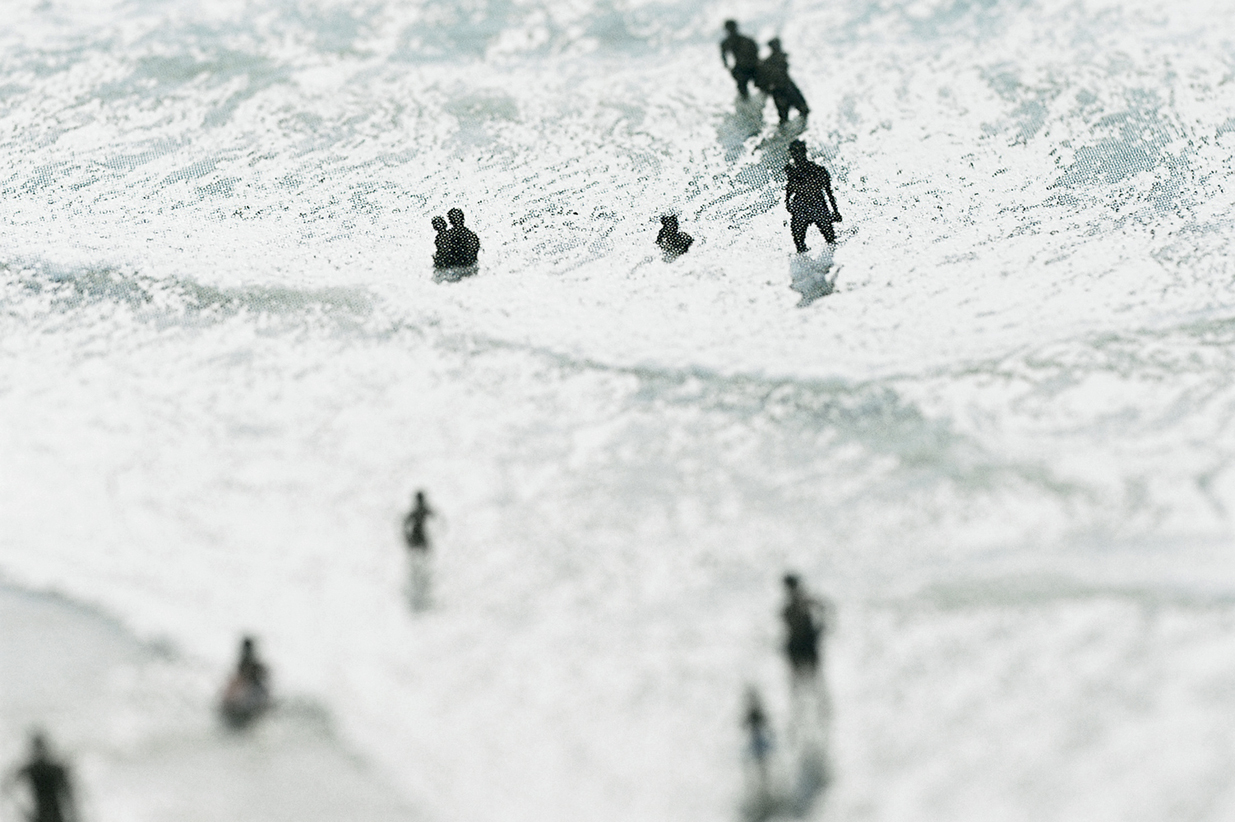
bathers 12
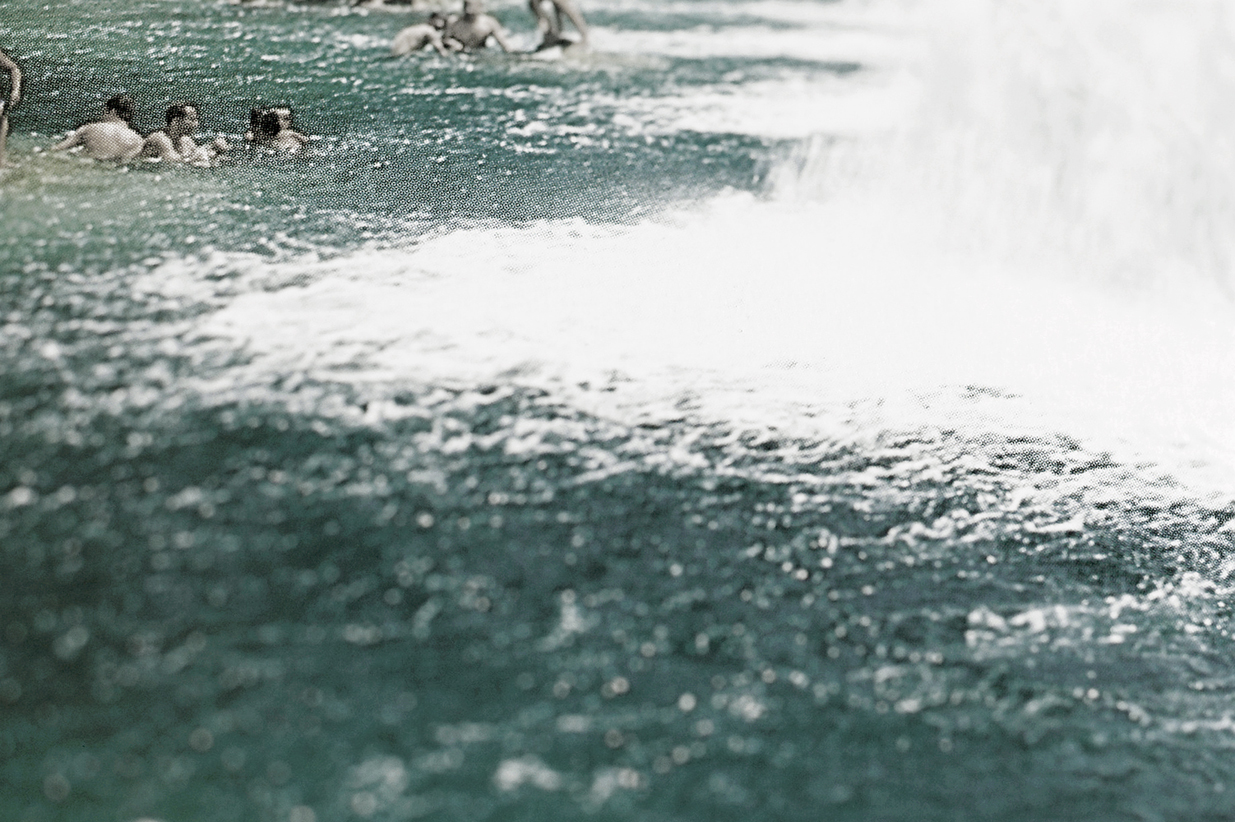
bathers 13
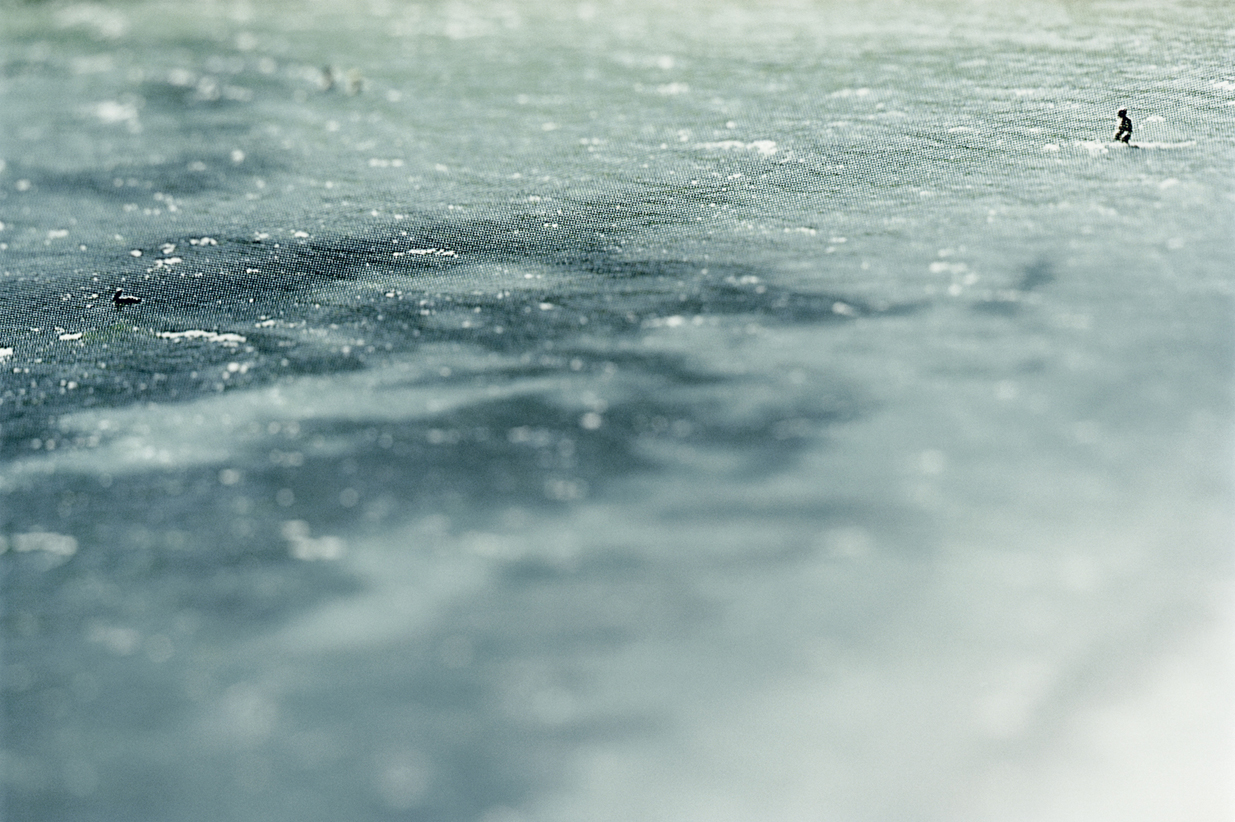
bathers 14
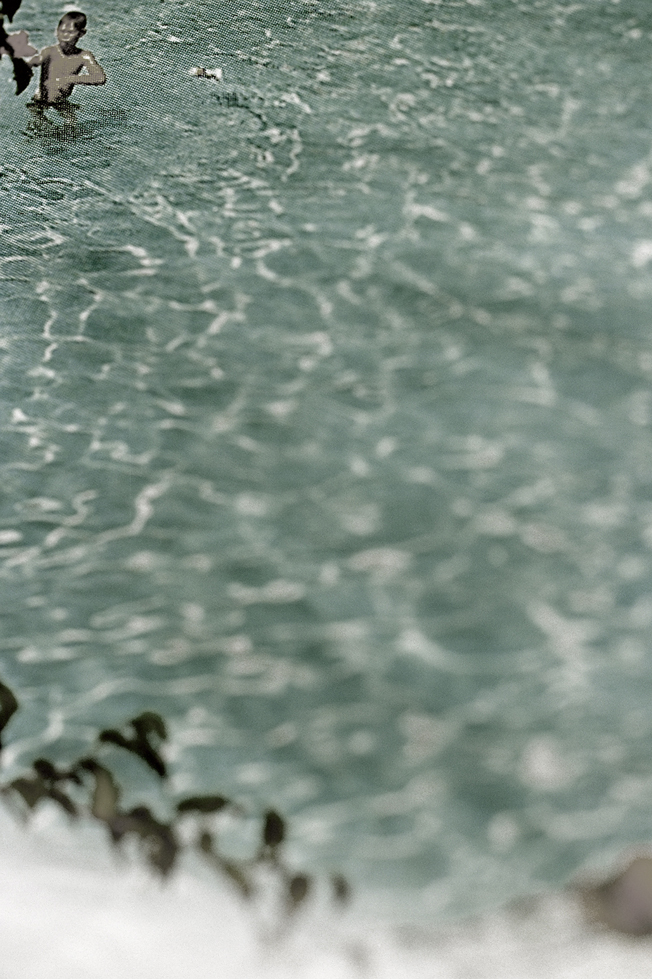
bathers 15
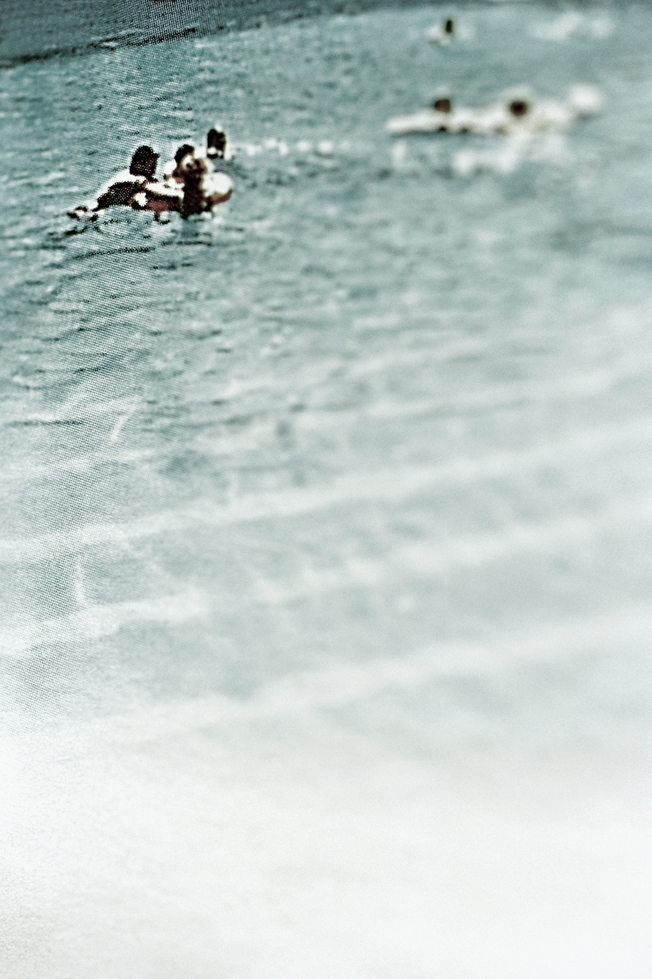
bathers 16
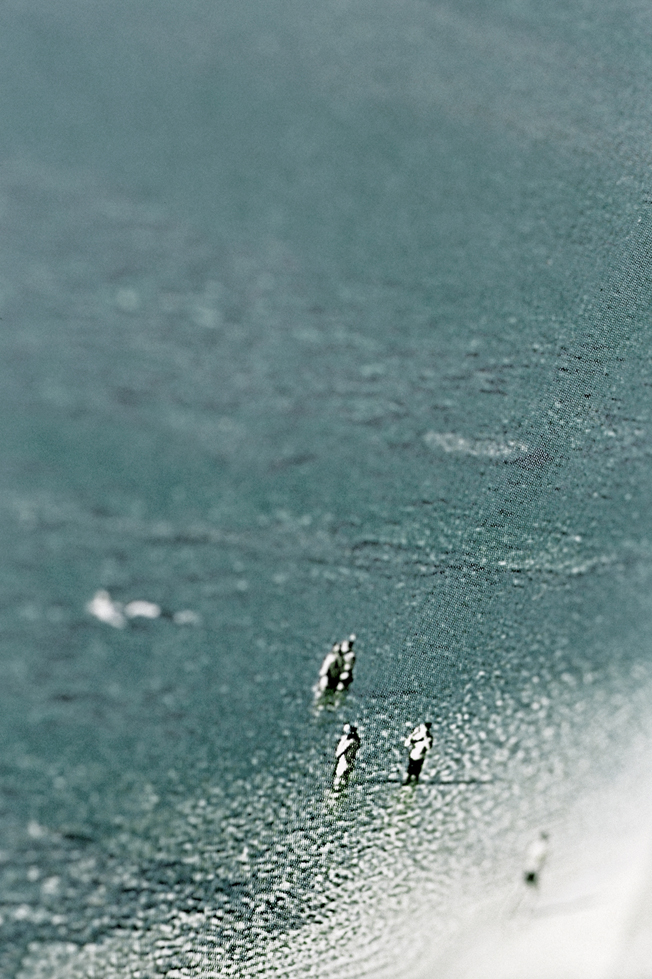
bathers 17
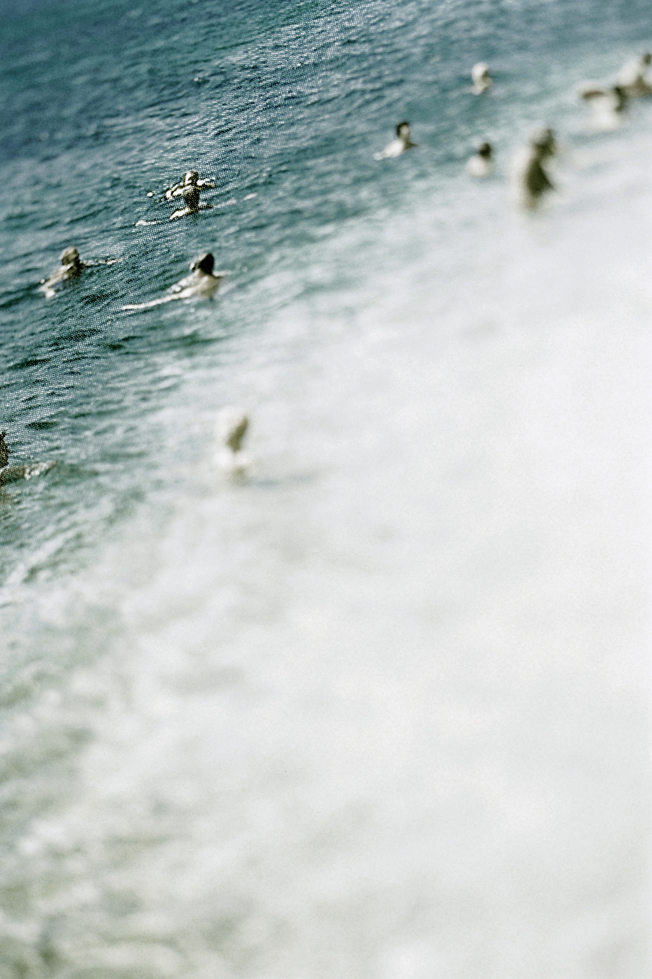
bathers 18
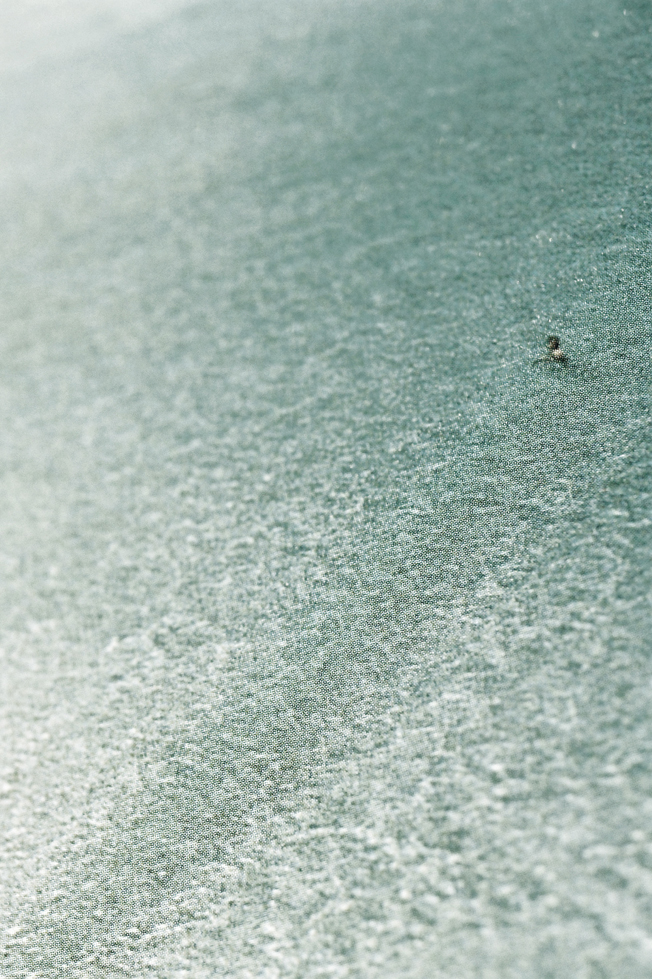
bathers 19
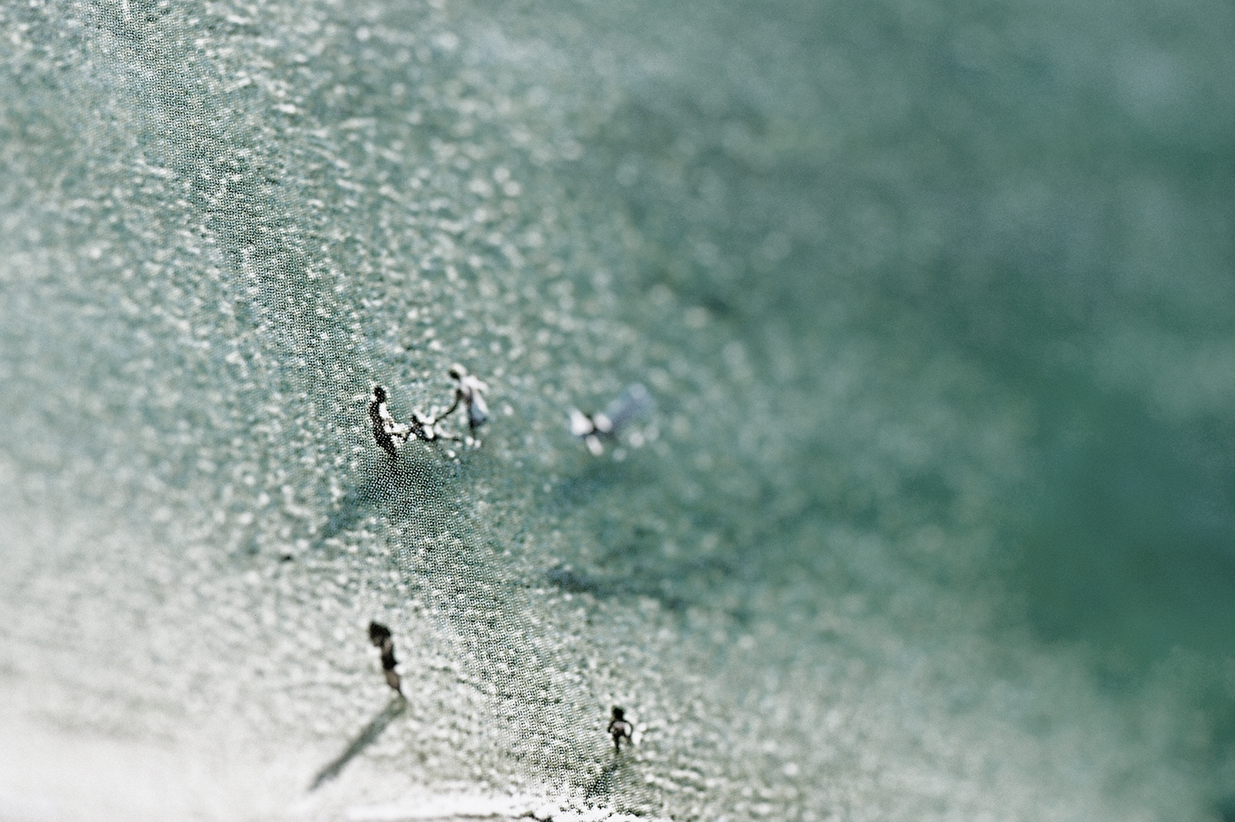
bathers 21
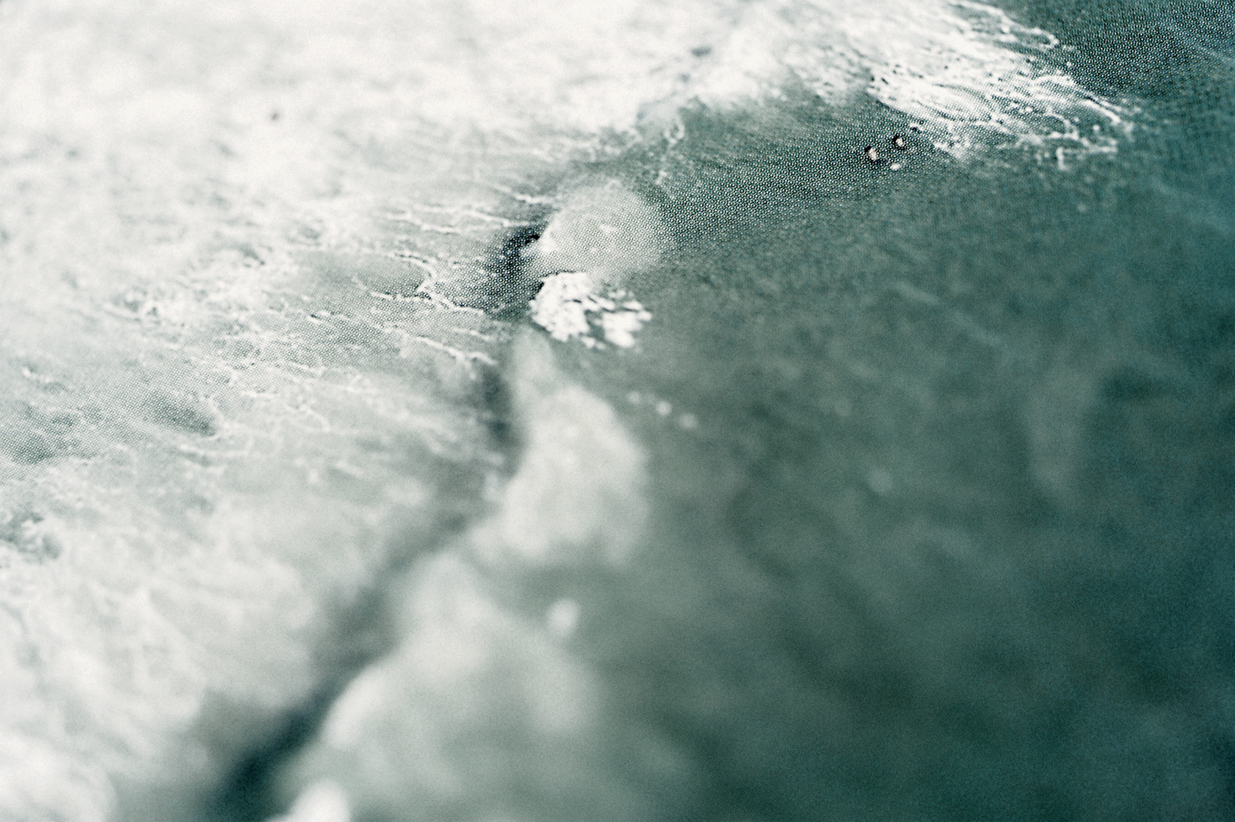
bathers 20
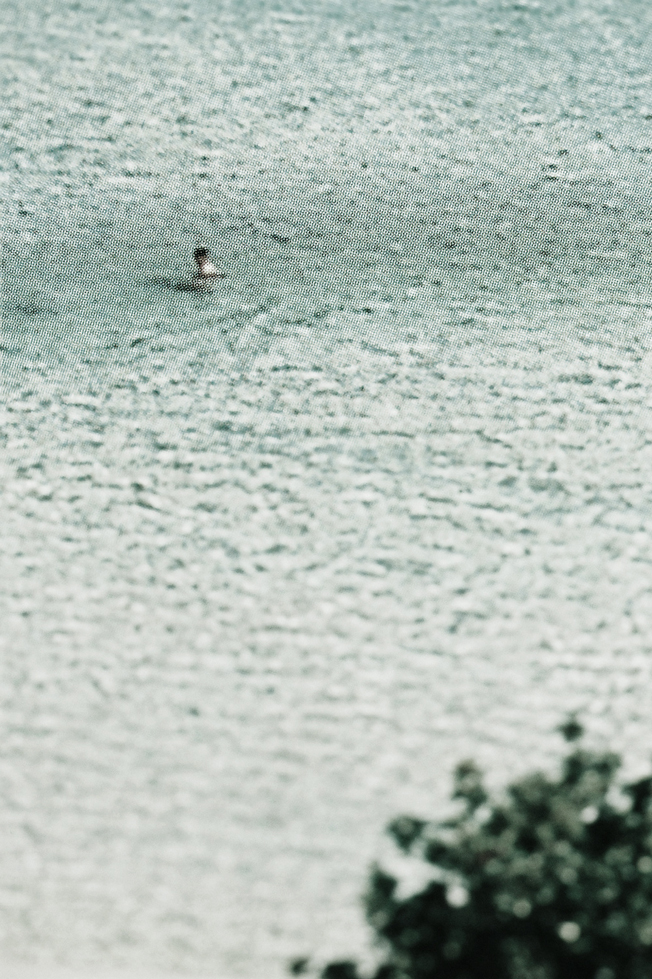
bathers 22
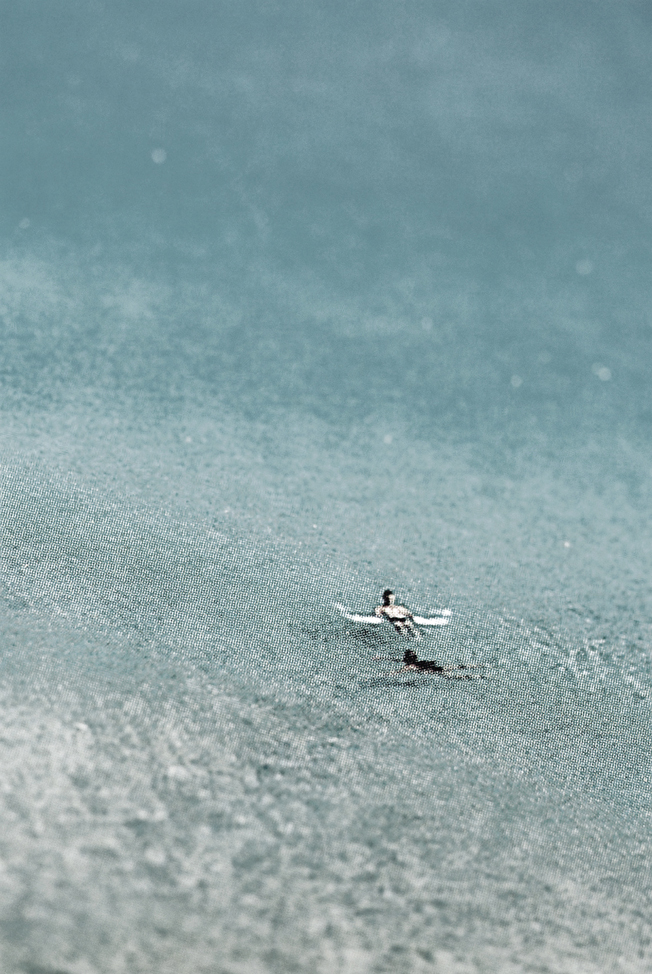
bathers 23
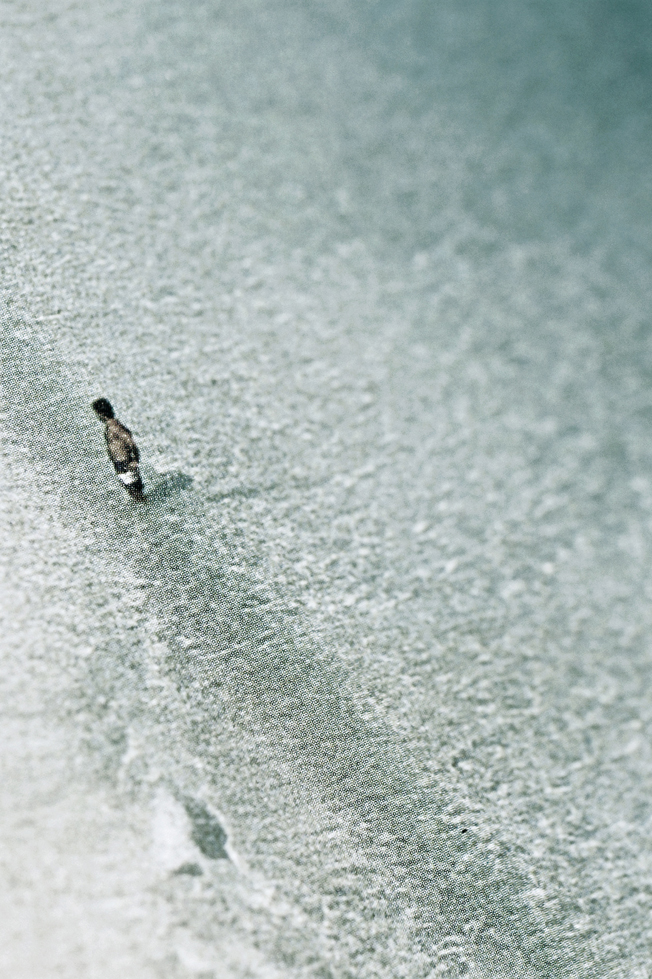
bathers 24
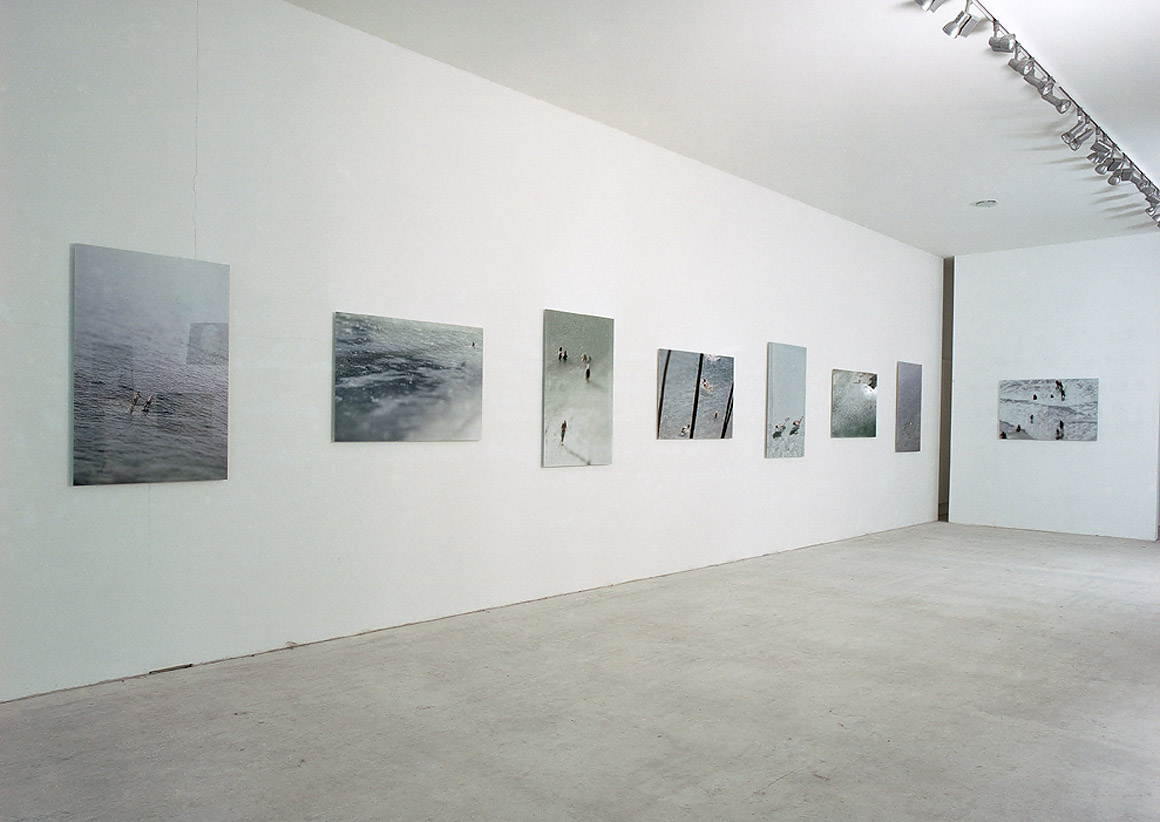
bathers installation view Institute for Applied Visual Sciences Wuppertal 2004 b
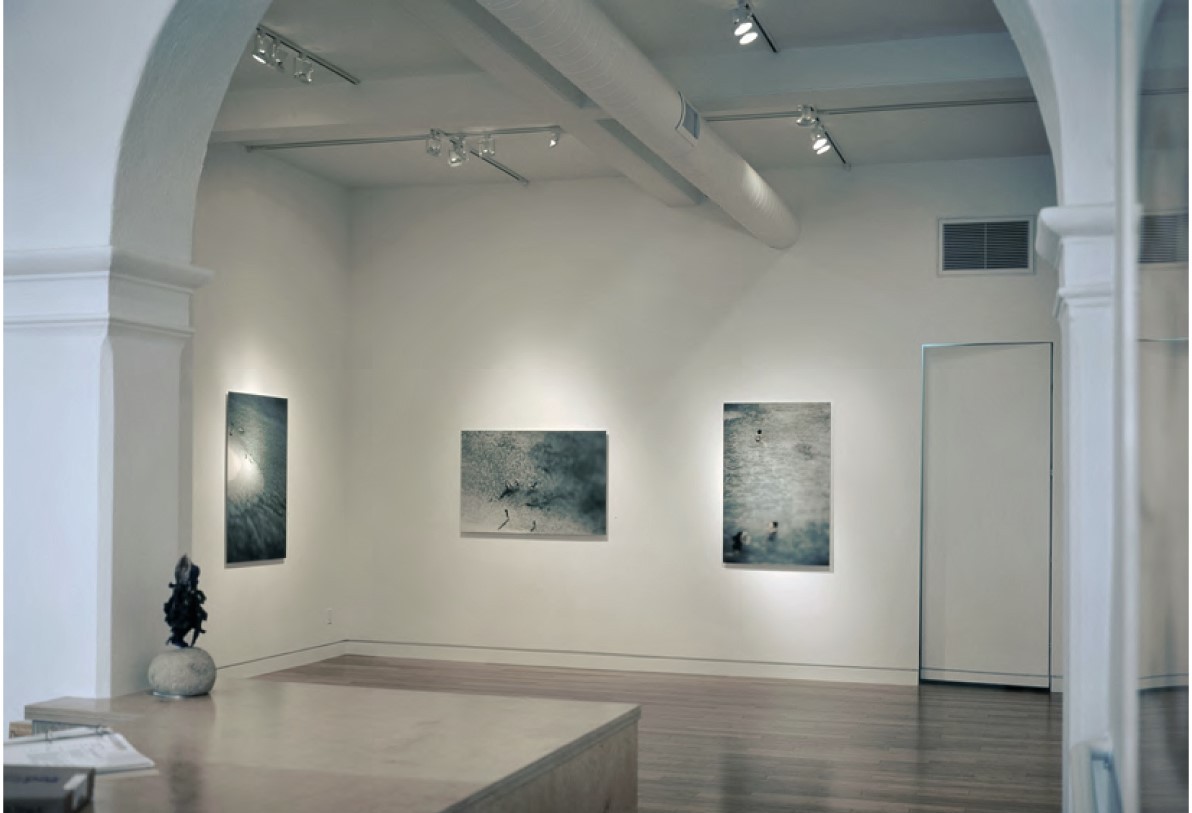
bathers installation view gallery edward cella, los angeles 2007
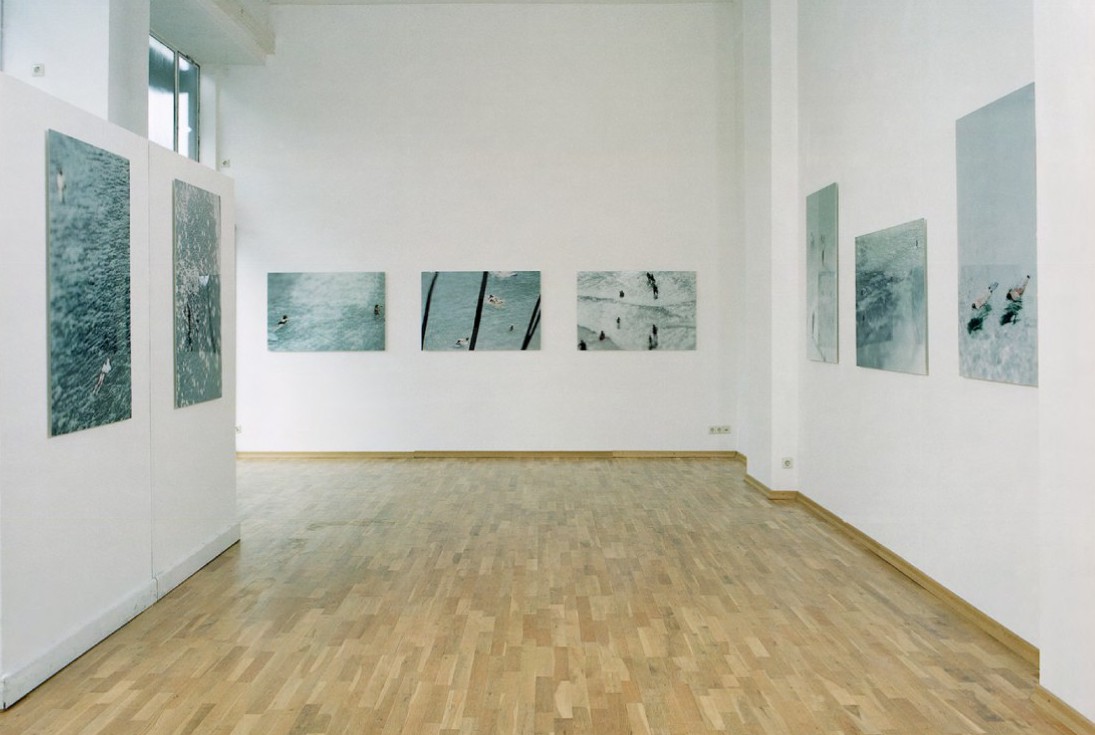
bathers installation view Gallery Poller Frankfurt 2004
Bathers 2003/04
Mein fotografisch-künstlerisches Interessse liegt im Reflektieren der Bedingungen unserer Wahrnehmung von Wirklichkeit. Ich glaube, daß heutzutage der Sinn des Sehens (unsere direkteste Form der Aneignung und Konstruktion von Wirklichkeit, wie wir uns ein Bild von der Welt machen) im Nachdenken über diese Wahrnehmungsform selbst liegt. In Buchprojekten und Ausstellungen habe ich Wahrnehmungs- und Welterklärungsmodelle mit verschiedenen visuellen Konzeptionen und Bildsprachen untersucht.
Den Hintergrund meines aktuellen Projektes bildet das Element Wasser. Der menschliche Körper besteht zu ca. 70 % aus Wasser, und ca. 70 % der Erdoberfläche sind mit Wasser bedeckt. Bereits vor unserer Geburt wachsen wir in der Nährflüssigkeit des Uterus heran. Die Existenz in einer flüssigen Sphäre ist eine archaische, vorbewußte Lebensform, die die Wurzeln unserer menschlichen Entwicklung aufzeigt. In unserer Kulturgeschichte ist der Akt des Schwimmens/Badens immer zweiseitig konnotiert: Überleben in einem lebensfeindlichen Element, sowie Möglichkeit zur Körperhygiene und Entspannung. Die Kulturgeschichte der Darstellungen von Schwimmern reicht von Höhlenzeichnungen über antike Mosaiken, mittelalterliche Buchmalereien, die Malereien Cézannes oder Matisses bis zur Pin-Up-Fotografie. Im 20. Jahrhundert benutzt die Tourismus-Industrie diese starken visuellen Archetypen, um potientielle Ferienziele zu bewerben.
Für meine aktuelle Arbeit „Bathers“ verwende ich als Ausgangsmaterial gedruckte Abbildungen von Badenden, Schwimmenden, Plantschenden, die ausschließlich touristischen Urlaubs- und Wellness- Werbekatalogen entstammen.
Die grellbunten Vorlagen werden von mir re-cycled, indem ich Ausschnitte von Luftaufnahmen aus der Vogel/Gottes-Perspektive mit offener Blende und geringster Schärfe re-fotografiere; der Horizont wird eliminiert. Diese Bilder werden anschließend mit Bildbearbeitungssoftware bearbeitet, so daß farblich fast völlig entsättigte Bilder entstehen.
Das Türkisblau von Karibik und Ägäis verdünnt sich zu einem subliminalen Farbschleier. Das Ergebnis ist eine nur von Uferfragmenten, Wellengang, und vereinzelten Badeutensilien unterbrochene große Leere, die die zu abstrakten Punkten mutierten Badenden bedrängt. Diese Leere wird jeweils zerteilt durch die in der schmalen Fokus-Ebene sichtbaren Rasterpunkte des ursprünglichen Druckmaterials. Diese bis fast an die Schwarz-Weiss-Grenze entfärbten Bilder verlieren völlig ihre aggressive plakative Wirkung und „verschwimmen“ buchstäblich zu abstrakt/konkreten Oszillationsfiguren, zu einem visuellen “Rauschen”. Dieses Rauschen wird verstärkt durch den sehr gleichförmigen gemeinsamen visuellen Nenner, den ich nur minimal variiere.
Lambdaprints auf Aludibond mit Diasec-Plexiglas, 80 x 120 cm, Edition v. 5 + 1 a.p.
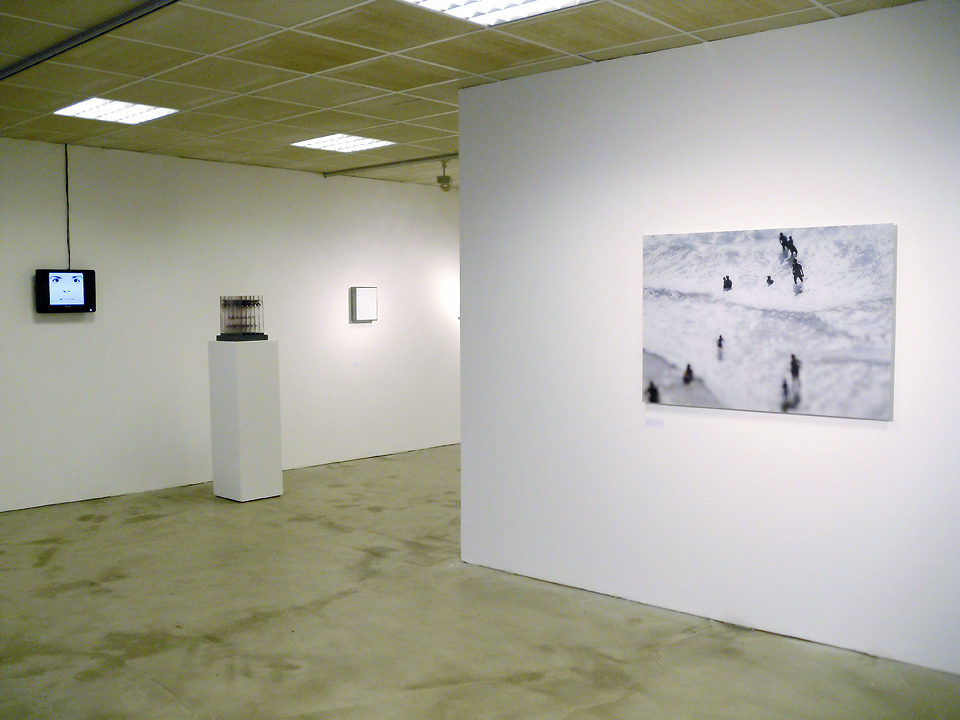
Die Farbe Weiss installation view Gallery Obrist, Essen 2010